Texas is the second largest state in the Union in terms of area and population. Do you know what else Texas has in abundance, other than people and space? You’ve guessed it: birds. To be more precise, Texas is well-known for being home to a large number of owls.
As we don’t want any avid bird watcher to miss precious sightings of these magnificent owls, we’ve created a list of the 17 types of owls in Texas.
Without further ado, let’s get into it!
Stygian Owl

Nothing stands out more than this owl’s yellow eyes amidst its dark feathers. The Stygian owl also has thin, white eyebrows, and its underparts have dark brown streaks.
This owl’s main habitat is evergreen and deciduous forests. That doesn’t mean it’s hard to find, though, as the Stygian owl also lives in open areas that have patches of forests here and there.
With an appetite for small mammals, amphibians, and crustaceans, Stygian owls like to hunt at night.
Northern Saw-Whet Owl
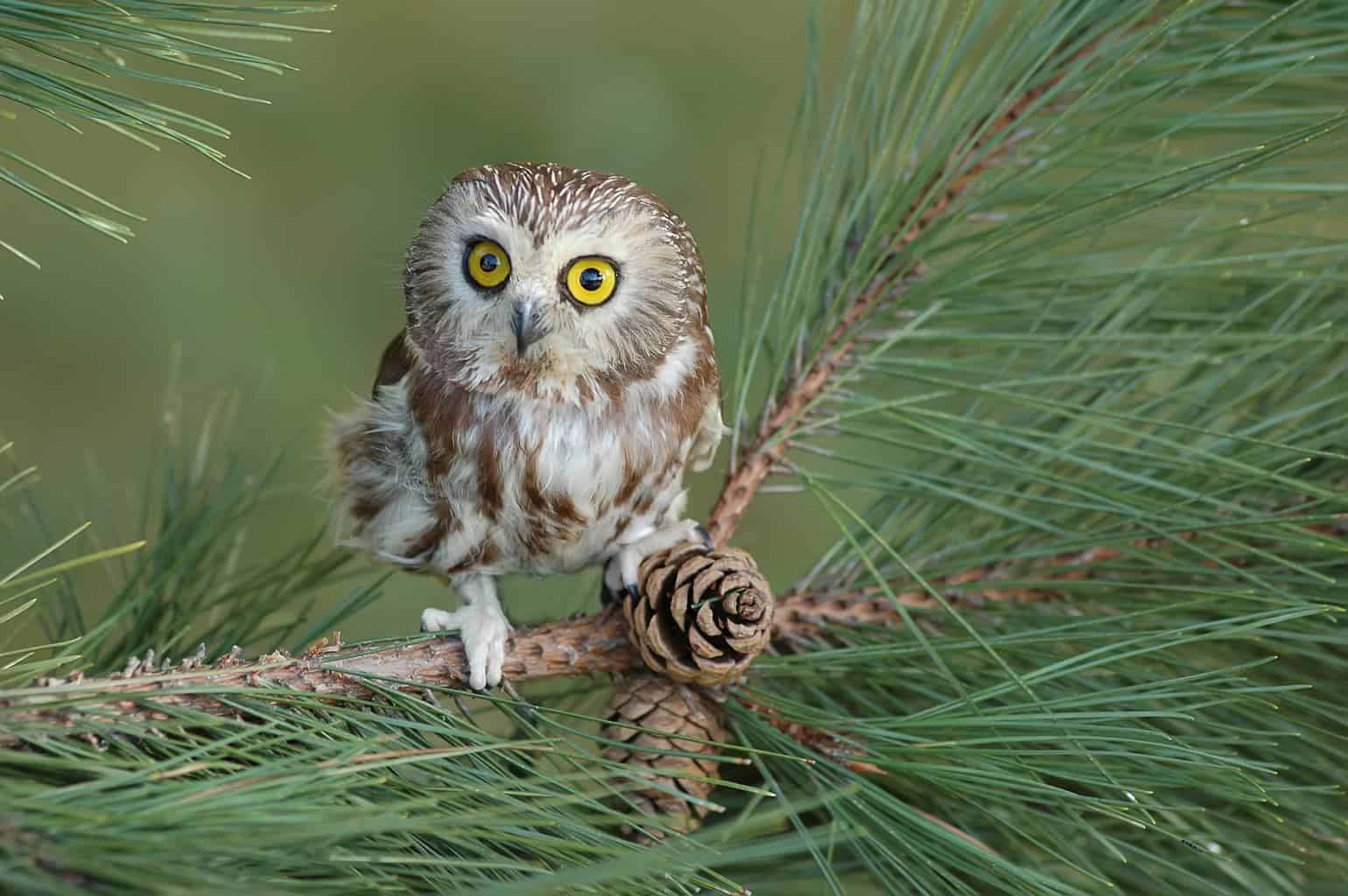
This is the smallest species of owl in all of eastern North America. Just like the Stygian owl, the Northern Saw-whet owl also has yellow eyes. However, their feathers aren’t as dark. Rather, they’re reddish-brown with white streaks on the belly.
The main residence of Northern Saw-whet owl is woodlands of all types. That’s because the dense tree coverage is a must for their roosting and perches are needed for hunting. However, during migration, they can be easily sighted in a whole variety of suburban and rural environments.
Short-Eared Owl

Short-Eared owls belong to the genus Asio, aka, the eared owls. This whole genus has tufts of feathers on the sides of their heads resembling the ears of mammals. As the name implies, Short-Eared owls have short tufts that only appear when they’re in a defensive position.
You won’t have a hard time finding these eared owls, as they inhabit grasslands and open spaces where they look for comfortable nesting areas. Short-Eared owls have brown feathers that resemble flames, that’s why their Latin name is Asio flammeus.
Western Screech-Owl
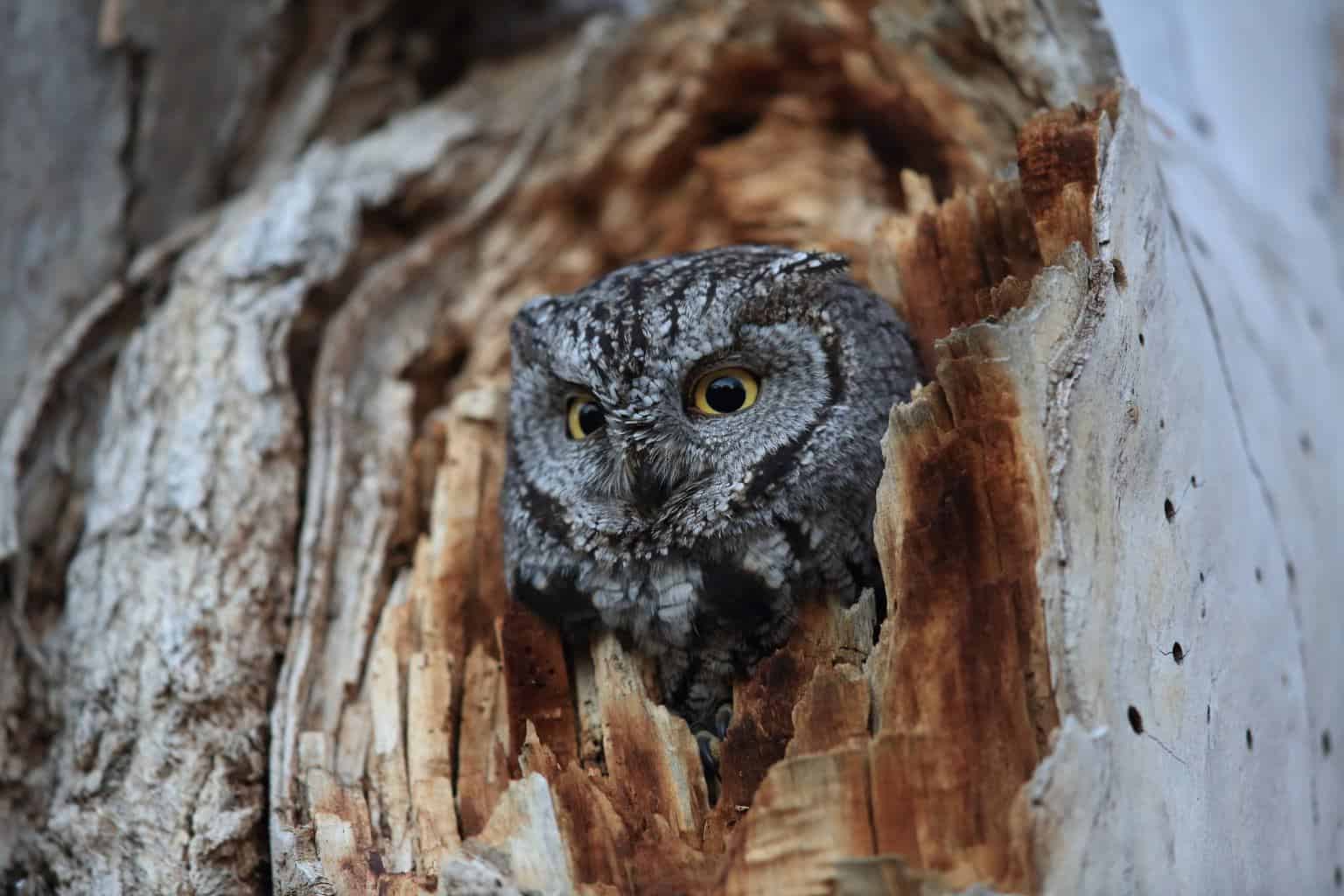
Though its body is small, the Western Screech-owl has a large, nearly square head. What’s more, this large head is connected to the small body almost directly, with no neck.
You may think its appearance is funny, but this will change once you take a close look at its yellow eyes, pale face, and the dark outlines surrounding them.
Like their eastern cousin below, Western Screech-owls aren’t the migratory type; they reside in one place year-round. Being almost exclusively nocturnal, your chances of seeing these owls are slim.
Hearing them, however, is a different story. That’s because they emit many characteristic sounds, like the classic sound of courtship song. which has a bouncing-ball feel to it.
Eastern Screech-Owl
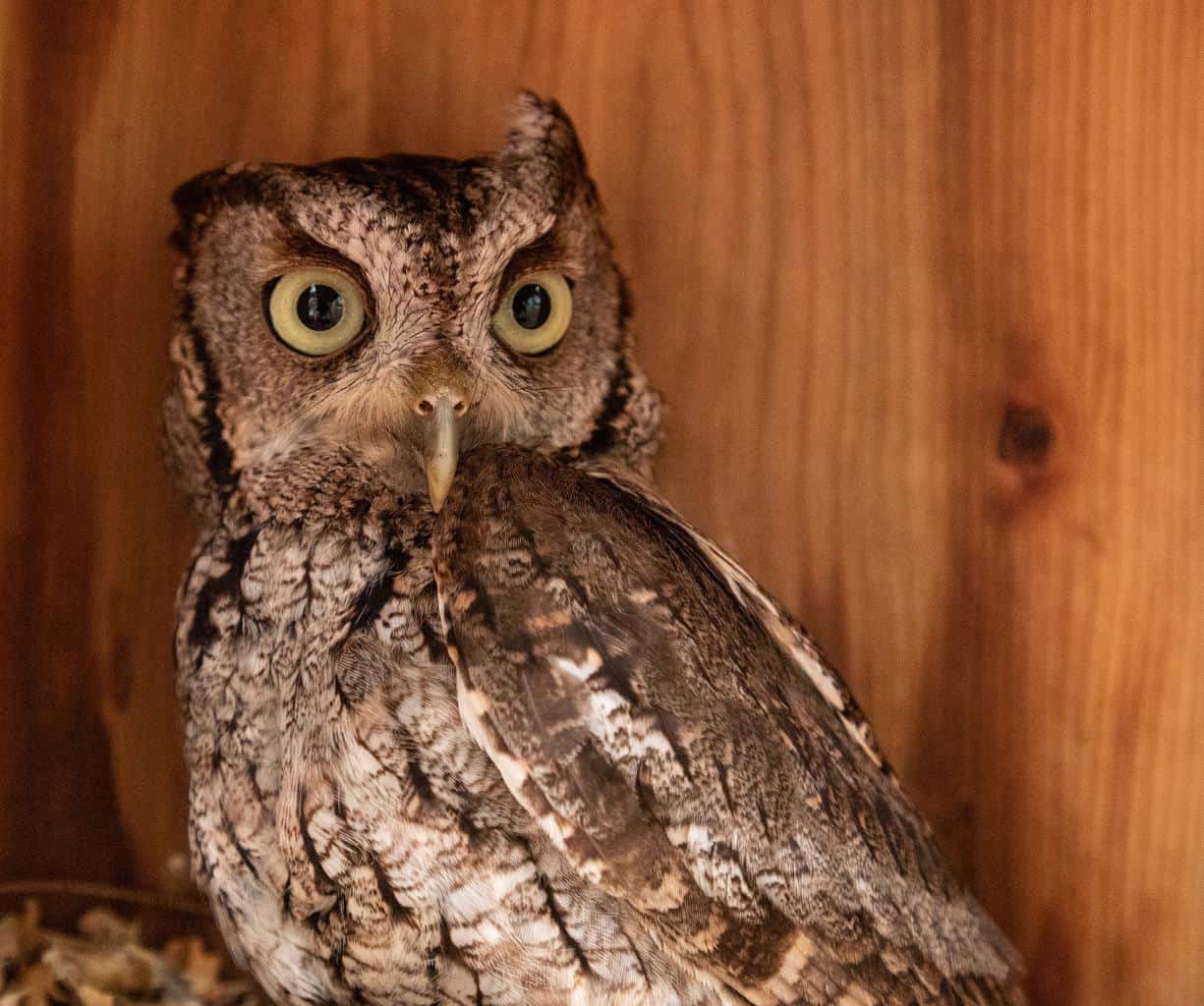
Eastern Screech owls are much like their Western brothers in appearance, so you’ll distinguish them based only on their variety of sound.
The habitats of both species intersect at the Pecos River. Now you know where to go in order to spot both of these owls!
Eastern Screech-owls are small with yellow eyes and clearly visible ear tufts. They exist in two color patterns: either gray or reddish.
Flammulated Owl
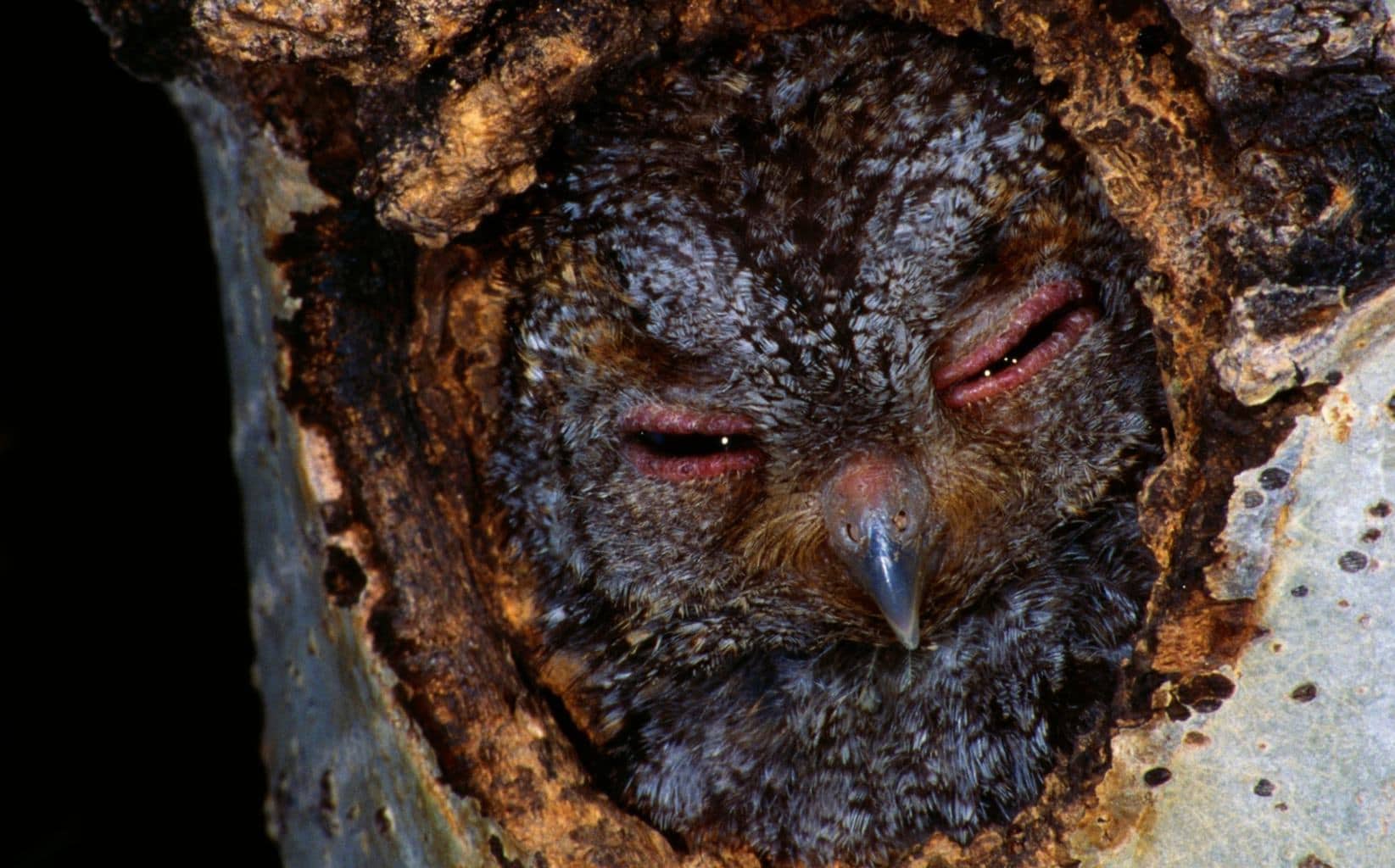
Comparable to a small soda can, these tiny owls are quite the rolling stone. Despite preferring pine and fir trees as their homes, Flammulated owls continually migrate from one place to another.
A small, energetic bird isn’t the easiest thing to spot. However, when you know that Flammulated owls have a characteristic low-pitched hoot, you’ll start listening for this common sound instead of looking.
Flammulated owls can produce that sound because they have exceptionally long windpipes. This makes this species of bird a great service: it makes them seem as though they’re larger than they really are, thus protecting them from predators.
Northern Pygmy-Owl
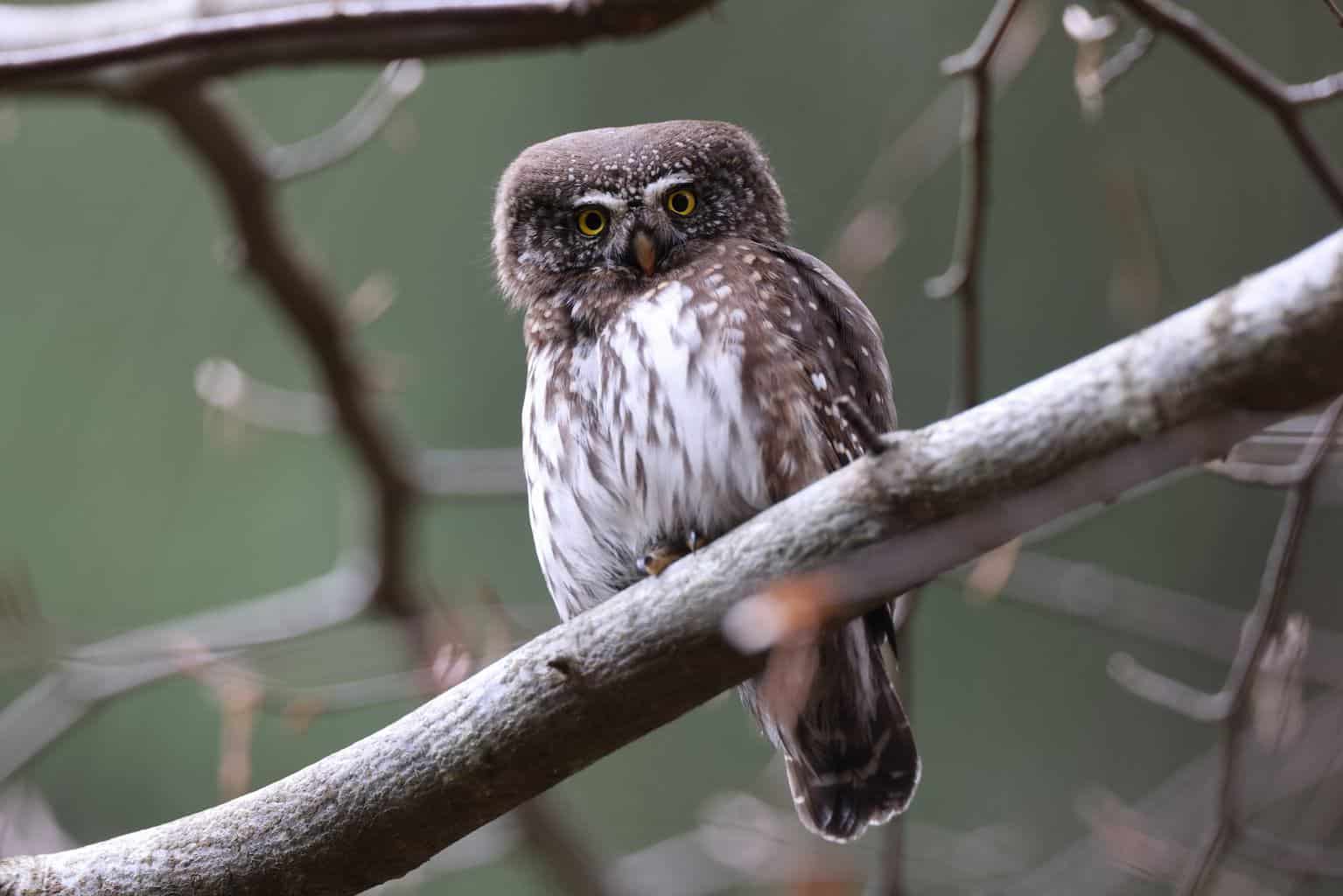
Unlike many other owls, Northern Pygmy owls prefer to hunt during the morning. They’re also not so big on living in continuous forests; they prefer mixed forests with open spaces. This is due to two things: first, it matches their hunting style, as open areas allow them to spot and then dive down for their prey.
Woodpeckers are the second reason why Northern Pygmy owls live in mixed forests. These owls capitalize on the cavities woodpeckers make and turn them into nests. So, wherever those woodpeckers live, Northern Pygmy owls will be around the corner just waiting for a good tree trunk to settle in.
Snowy Owl

As their name indicates, Snowy owls are well-known for their white color. They’re also called “snowy” because they mostly live in cold areas, including the Arctic. To adapt, they have heavy talon feathers and thick plumage.
Snowy owls are also the largest of their kind in North America. Their large size gives them quite the appetite: the adult can eat up to 5 lemmings per day, which will amount to 1600 lemmings in a year!
Great Horned Owl

Remember the tufts of feathers that resemble ears we mentioned earlier? Well, these owls have tufts so big that they look like horns more than ears. This is why they’re called Great Horned owls.
Their plumage is a patchwork of gray, brown, black, and white feathers, helping the owls camouflage amidst the woods and desert. As they’re well-adapted to such barren environments, Great Horned owls migrate only when food scarcity pushes them to the limits.
Elf Owl
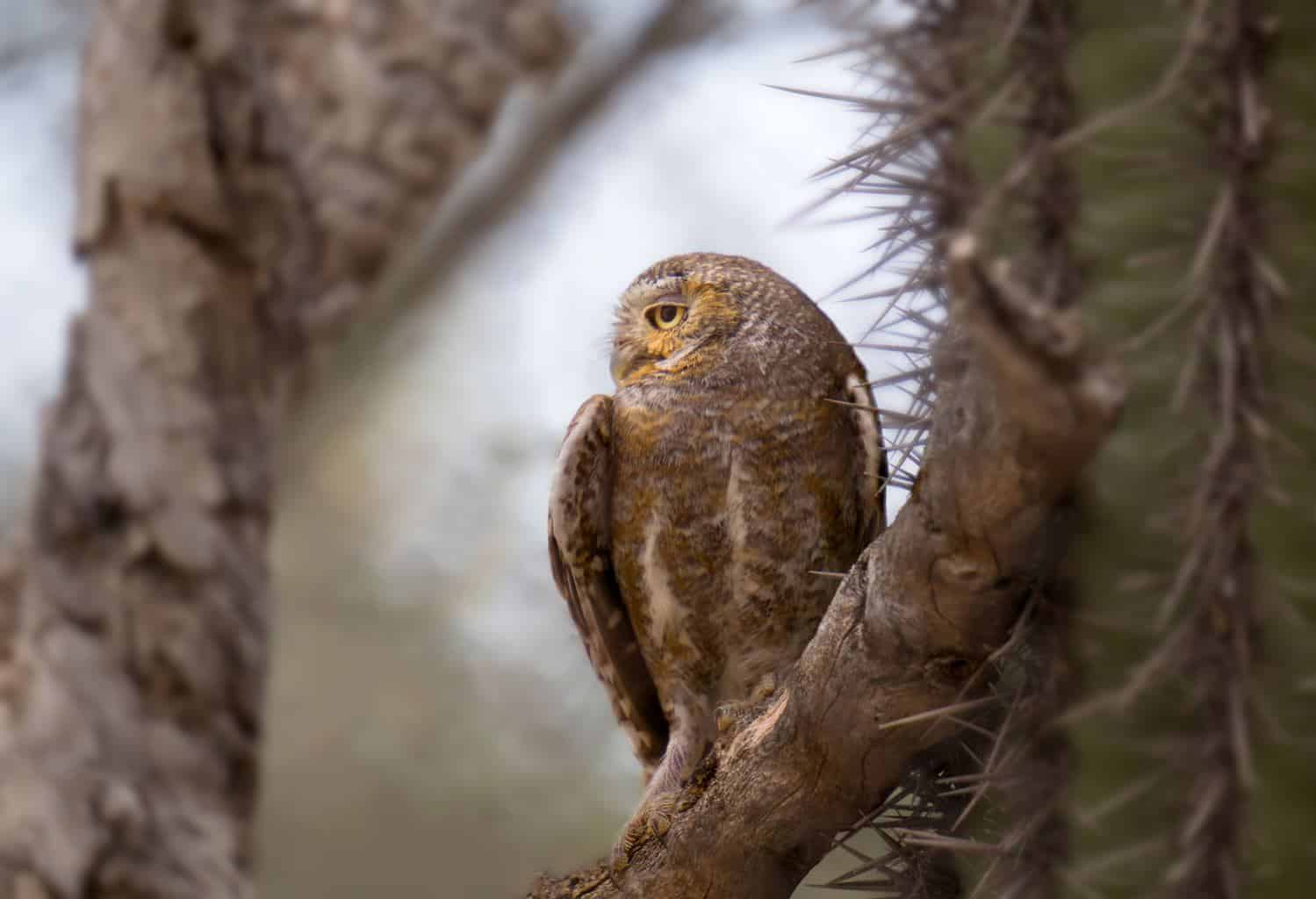
While the Northern Saw-Whet owl is the smallest in the eastern North America bird kingdom, the Elf owl is the smallest in all of the continent. From head to tail, the adult is only 6 inches in length. What stands out in the appearance of the Elf owl is the white V-shaped line over its eyes. This owl is reddish-brown, with its chest being a light brownish yellow.
In Texas, Elf owls will be mostly found in the lower Chihuahuan desert. During breeding season, they also depend on the occasional woodpecker’s tree cavity for their nests. Specifically, they leverage the cavities Ladder-backed woodpeckers make.
Ferruginous Pygmy-Owl

Reddish-brown with white steaks, Ferruginous Pygmy owls aren’t particularly picky when it comes to their habitat; they can live in cold lowlands and rainforests as well as they can live in the desert. They don’t migrate, either.
Ferruginous Pygmy owls are considered opportunistic predators. This means they’re flexible and comfortable with changing their diet based on the environment.
Mottled Owl

Mottled owls, so named because their back and head are mottled brown, can be found in jungles and dry forests. Unlike many other owls, their eyes are all black instead of yellow.
Remarkably, Mottled owls are the owl species showing the most sexual dimorphism. This means the female can look as though it’s a different bird altogether than the male. This “dimorphism” is apparent in how much larger the females are.
Burrowing Owl

Burrowing owls may initially seem daring when you find them casually perched on fence posts with humans all around. Once approached, though, these owls won’t fly away. Instead, they will dive down for their burrow. That’s why they’re called Burrowing owls.
There’s still an element of the unknown regarding the migratory habits of Burrowing owls. It’s believed, however, that Northern Burrowing owls spend their winters in Texas.
Long-Eared Owl
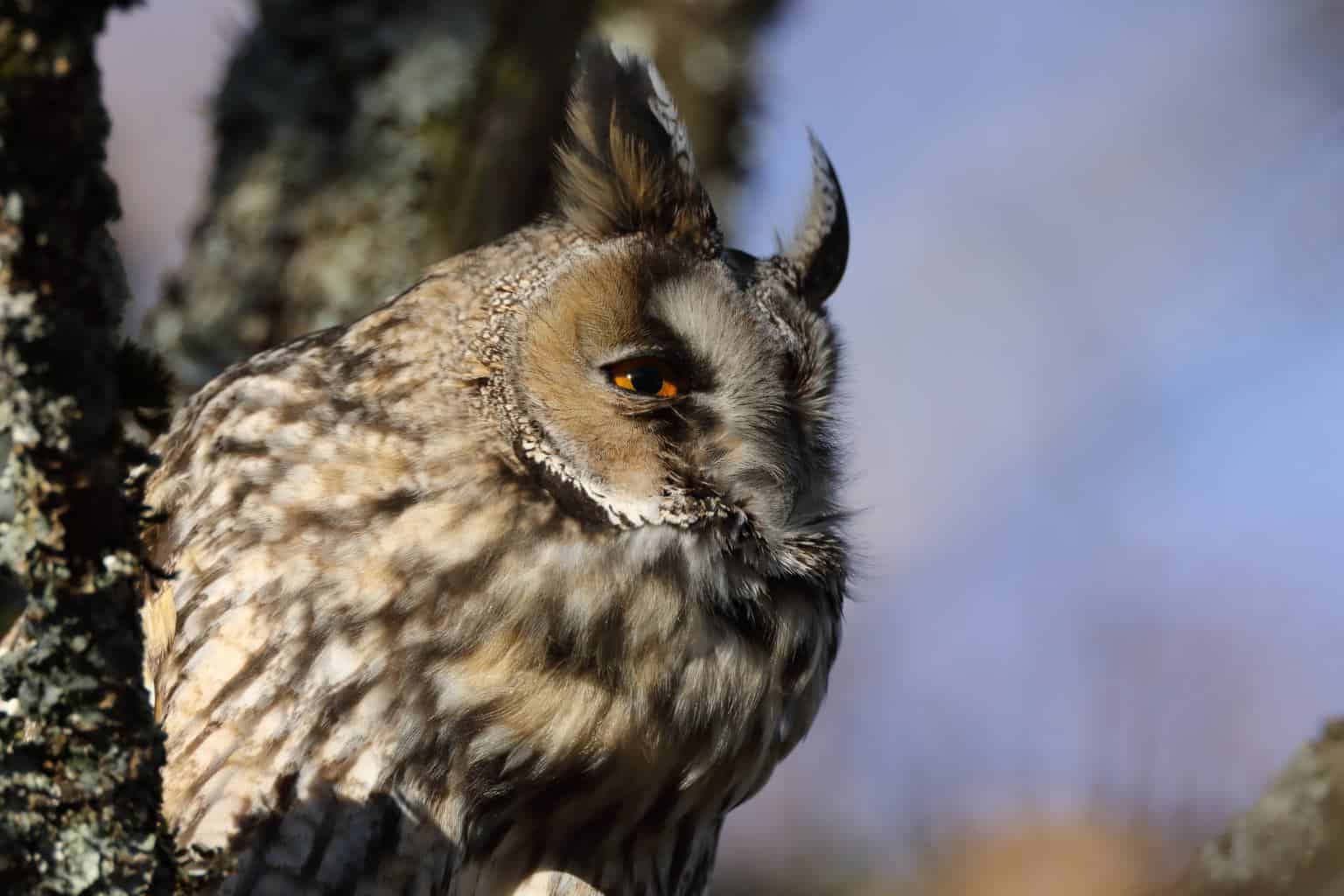
As implied by the name, Long-Eared owls have one of the largest ear tufts among owls. They’re mostly gray, with an orange disk occupying most of their faces.
These owls inhabit many kinds of forests, yet they prefer coniferous forests over forests of deciduous trees. Most of the forests they inhabit lie close to an open grassy area where prey is abundant.
Barred Owl

Barred owls live mainly in wooded river bottoms, woodlands, and wooded swamps. Because of the notorious swamp habitat loss in the 60s and 70s, the Barred owls’ population has declined a little, especially in the South.
Consequently, Barred owls are now exploring different territories, crowding out the Spotted owl from the Northwest.
Spotted Owl
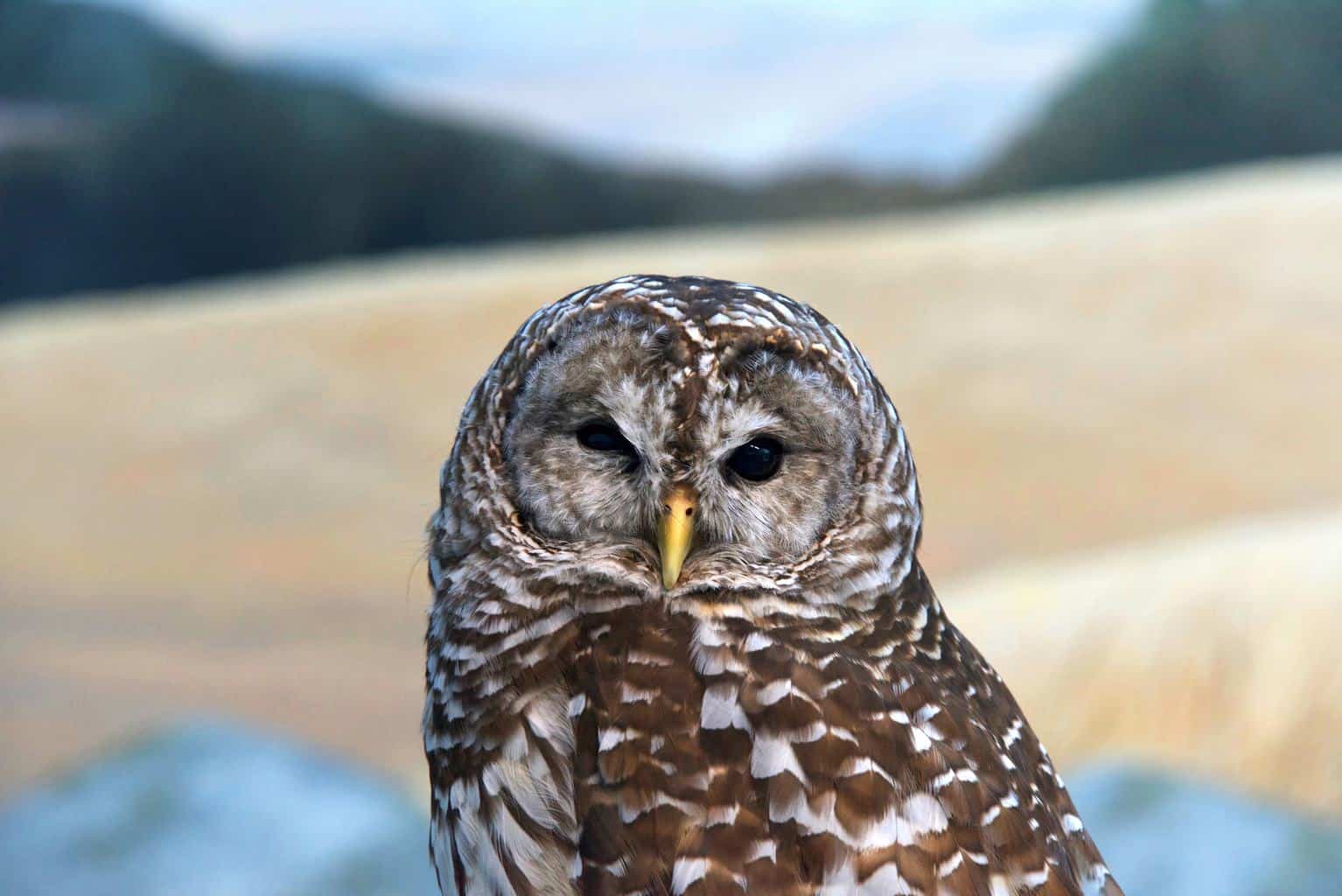
Spotted owls have dark brown feathers and similarly dark eyes. The head, neck, and back have white spots, causing it to be called the Spotted owl. It lives in wooded ravines, humid forests, and wooded canyons. These owls also dwell in forests that are overshadowed by hanging canyon walls.
Spotted owls generally seek darkness. That’s why you’ll find them roosting on a tree branch, sheltering themselves from direct sunlight using high canopies.
Barn Owl
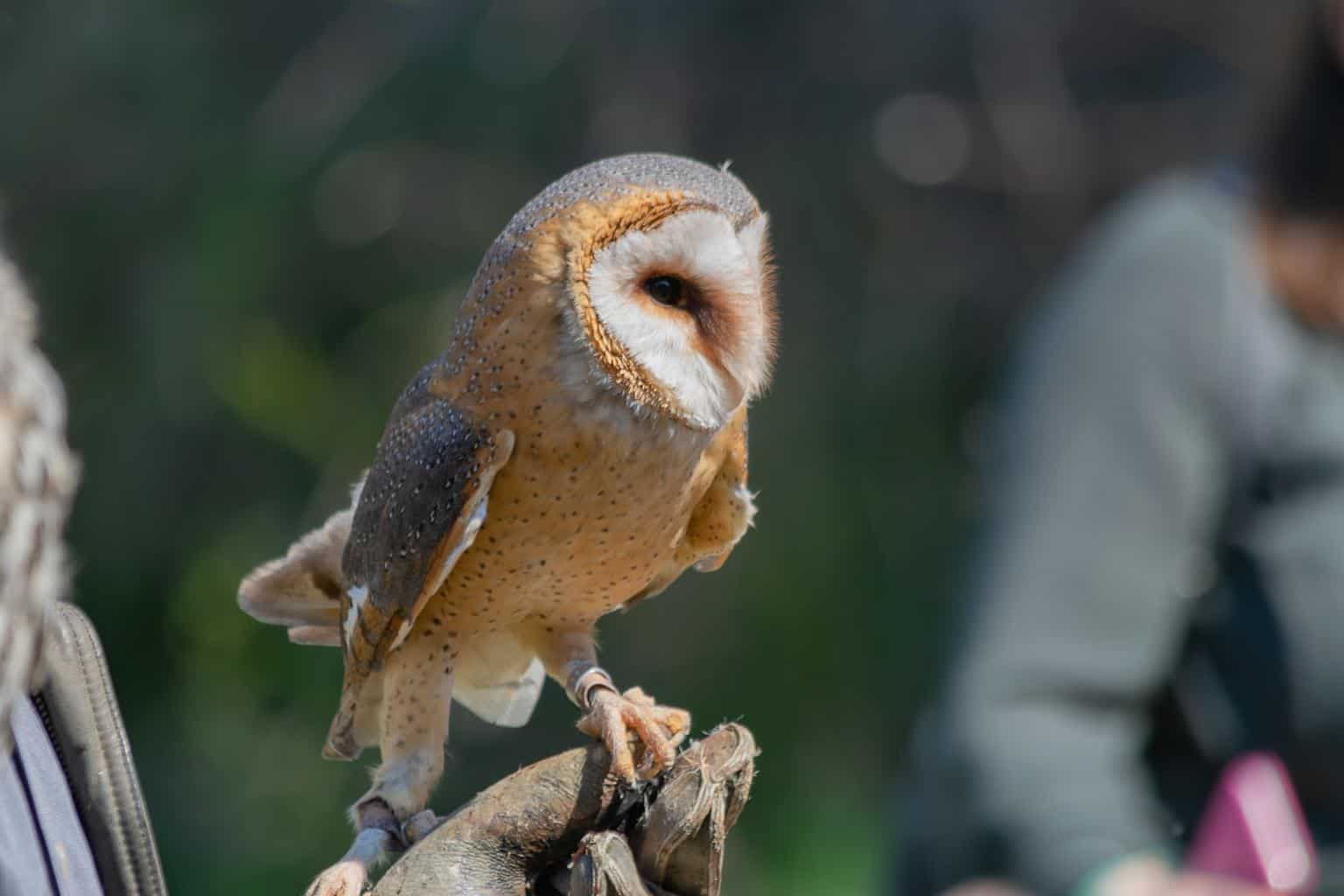
The Barn owl is best known for its heart-shaped white face; so much so that it’s sometimes called the monkey-faced owl. The Barn owl is well-equipped for nocturnal hunting: it has a heightened sense of smell, and an ability to see in dim light.
Sources say that the Rio Grande Valley, especially in the areas of Bentsen State Park and Estero State Park, is a great place to spot this wonderful creature.
Its diet consists mainly of mice, rats, shrews, and small birds.
Final Words
Owls are intriguing creatures, and the fact that they’re mostly nocturnal means they won’t be showing up in your neighborhood bird bath, which may disappoint birders who are waiting to get a sighting of them.
But with 17 different species of owls in Texas, even if your eyes missed them, your ears are sure to catch their wide variety of characteristic sounds. Remember to try searching in dense forests and away from sources of bright light.
As many owls live near woodpeckers so they can use the cavities as nests, you will most likely see your share of woodpeckers, too.
This multitude of owls was enough reason for birders to visit Texas; now with woodpeckers also in the picture, I bet they’re packing their bags as we speak!

